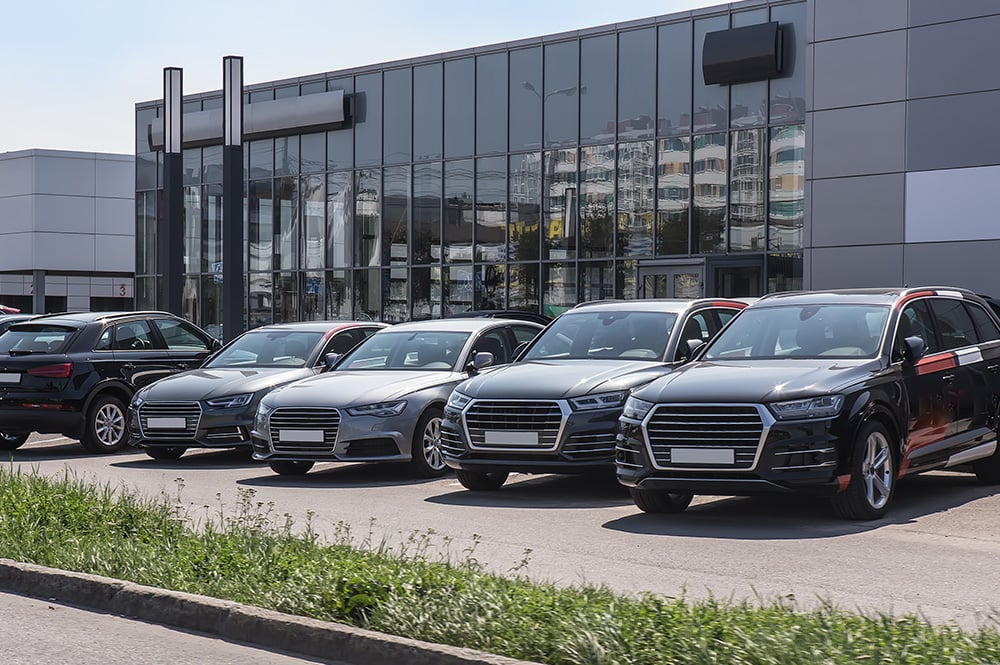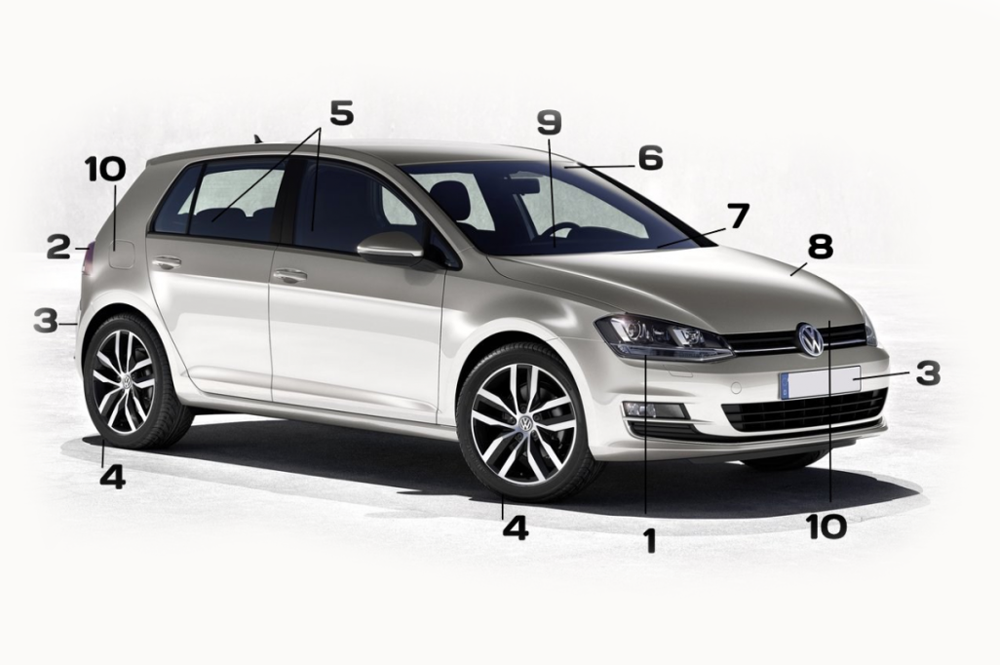What Car Specifications can you get from a Registration Number?


Technical specifications check provides much information earlier than buying a used automobile in the market. People customise their vehicle number plate all the time, however, from time to time it can also hide the car’s history.
If the automobile is up for sale, the dealer needs to disclose the information for number plate change if any. If the seller withholds this information, then be alert. Performing a technical specifications check to provide you with extra facts on the car’s technical specifications, saving you time and money. Technical specifications check with registration number can provide you vehicle specs amongst different information. As per data, 1 in three automobiles is observed to be fraudulent. Many people have no idea about what to check when purchasing a used car. If you are shopping for a used car, enter the registration number of the vehicle and get all records and details before your purchase.
You can additionally find out specified statistics about the vehicle’s specifications through technical specifications check. The weight of the car will be given along with the dimension of its engine. Its year of manufacture will be provided to you, the kind of fuel it wants to run. Lastly, data concerning its emission levels for CO2 will additionally be made available.
In the free technical specifications check the document, you will find the brand, the model, colour, dimensions, year of manufacture, registration date, V5c, issue date, consumption of fuel, scrapped vehicles, MOT date, TAX check, Engine size, fuel, car type, CO2 marker, emissions, weight, mileage registrations, export info, security recalls, automobile snapshots from ads. The document will exhibit even greater statistics about the vehicle. Based on the VIN or registration number will exhibit the vehicle factory options alternatives listing so you can see all technical specs of the car.
The rapid technical specifications check gives a free record that lets you see a vehicle’s specs truly using its registration number. The file is made available to you in seconds of you entering the registration of the car and which is free.
The report includes the specifications such as:
This data is particularly beneficial for all people planning on purchasing a used car. The web page indicates your automobile statistics and specs from several distinctive sources. Our Motorscan search tool for technical specifications check is optimised to find any UK-registered cars or bike specifications.
If you are searching for fundamental car specs or a complete dataset with a technical specifications check, most VIN decoding options ought to be in a position to become aware of many of these preferred specs from VIN alone. While there are limited statistics encoded in a VIN, such as year, make, model, automobile and engine type, manufacturing place, etc.
So which automobile specs can be recognized by way of VIN? Here’s a listing of automobile spec classes that can generally be identified:
The quantity of an engine is a major factor in the evaluation of the car. In particular, the engine dimension is used by the insurance company for the price of insurance payments, whereas banks use this to calculate the lending price of a vehicle. There are various methods to find the details if you desire to recognize the significance of a vehicle engine. Engine dimension is decided by using the amount of fuel and air volume that can be pumped into the cylinders of an automobile and this is measured in cubic potential (cc). The insurance corporations will cost greater for a large engine dimension seeing that the power output is greater and the tendency to be part of an accident is tremendously high, whereas it is no longer the same for small cars. So do notice in thought that if you are going for a large engine size, you would have to pay more. An automobile with a large engine will produce extra power than a car with a smaller engine. Most contemporary automobiles have powered engines, permitting them to be more powerful. A check of horsepower additionally referred to as BHP will decide the power of a piston. You will get all this info from the technical specifications to check.
Small engine cars: Less consumption of fuel is an economic way that smaller engines work, various between 1 – 1.9 ltr. It additionally leads to much less strength than a large engine, typically, they are correctly designed to be used for urban driving. If the car has to hit excessive speeds, fuel consumption will enlarge and would need to work a whole lot tougher to furnish such energy.
Large engine cars: A greater measurement engine, for example, a two-litre engine, can be stronger, however, burns extra fuel, than a 1.2-liter engine. Using less fuel to obtain the energy should make it a pollutant due to incomplete combustion, and wish for consistent refuelling.
Turbocharged Engines: These cars will result in higher strength and however bad fuel economy because it has a greater cc engine, they guzzle up fuel with double pump injectors, etc.
Other specifications that you can collect via technical specifications check are as follows:
You should keep in mind that now not all specifications apply to every make and model, as some automobile producers permit extra customization than others. Additionally, the number of records that can be acquired by way of VIN will rely on the provider of the data.
Many sectors of the vehicle industry gain from the identification of car specifications by way of VIN, along with corporations concerned with car retail, transportation, threat assessment, servicing, and repair. Identifying car specs by using registration through a technical specifications check is an extraordinary way for companies to guarantee they are acquiring the most correct information. Data integrity is critical for all of these groups and can effortlessly be compromised without assistance from a very accurate VIN database.
Enter your vehicle registration number to locate out specifications of your vehicle through a technical specifications check. What info can you get under the technical specification category? Here are the details of the specification that you get via technical specifications check.
Deciding on the consumption of fuel for your new automobile is any other essential component to think about when searching for a vehicle. Petrol, diesel, hybrid, and electric powered all have their pros and cons and you have to assume about these earlier than making a choice. Most vehicle producers provide petrol and diesel engines. Hybrid and electric-powered models are turning frequent these days. Before figuring out one specific kind of fuel, decide about the kind of journeys you need, fuel economy, eco-friendliness, and running costs. You will be able to make all these decisions clearly if you perform technical specifications checks.
Likewise, diesel engines are a true choice for everybody covering greater than 12,000 miles a year. Whilst petrol motors tend to be higher for shorter journeys and occasional drivers. At the equal time, most full hybrid and plug-in hybrid models can cover distances with much lower running costs than their petrol variants– and much less have an impact on the environment. Electric cars, on the other hand, may additionally come with a greater price tag however have cheaper expenditure, are cost-effective and there’s no tax to pay thanks to their eco-credentials.
There are so many vehicle body styles and therefore choosing between a hatchback, saloon, estate, crossover, SUV, and a few greater ones can be difficult. Hatchbacks, for example, are ideal city rides and additionally a famous small family-friendly choice. Estates are a step-up if you want to carry loads so require a huge boot. MPVs are best for higher families. Saloons cruise fantastically on motorways and put a higher focal point on style. Crossovers and SUVs, with their greater driving function and more space, are turning into very famous amongst those searching for something extra adventurous. Pick-ups are the ideal desire for the ones who want to lift heavy loads. 4x4s will thrive off-road. And Convertibles and sports activities vehicles may also be proper for you if you like an enjoyable ride. You can choose this for a new car and also when buying a second-hand car with the aid of a technical specifications check.
When thinking about which car to purchase, suppose about the dimension and structure you want, and do a bit of research. You can do all this with the help of technical specifications.
Horsepower is the quantity of energy generated with the aid of the engine as it turns air and fuel into energy, torque, on the other hand, is the amount of pressure the engine is able to exert to pull the car forward. Local vehicle producers regularly use ‘hp’ and ‘Nm’ to characterise the vehicle’s horsepower and torque rating, the place ‘hp’ stands for horsepower, and ‘Nm’ stands for Newton-metres.
The transmission is an element that distributes engine electricity and torque to the drive wheels so the automobile can move. Nowadays, there are four primary kinds of transmissions: manual, automatic—or torque converter, automatic manual, dual-clutch transmission (DCT), and constantly variable transmission (CVT). Manual offers drivers full management of altering gears, whilst the automatic gives a greater comfortable and much easier ride by doing away with the hands-on operation of the clutch and gear shifting.
Automated guide transmissions function the near-exact equal design as a traditional manual transmission, however, a pc is in location alongside a digital control mechanism to have interaction and disengage the snatch and manage the gear transferring of the vehicle.
A DCT will act as a manual transmission, however, two clutches and a mechanical or electronic actuation enable this kind of transmission to row via gears and disengage the clutch.
The CVT, on the other hand, is simply automated however it affords a smoother riding experience as it no longer has to alternate gears to amplify or minimise speed. Think of it as having a single tool that can alter itself to low, medium, or high speeds.
This refers to the power wheels or the wheels that are pushed through the engine and transmission. The most frequent drivetrains are; front-wheel-drive (FWD), rear-wheel-drive (RWD), all-wheel power (AWD), and 4-wheel-drive (4WD).
ABS stands for Anti-lock Braking System. It’s a system that prevents the wheels from definitely locking, therefore stopping the tires from skidding. It lets the driver steer the car greater correctly whilst braking to stop a collision. EBD, on the other hand, has Electronic Brake-force Distribution. It mechanically adjusts and evens out the braking power to the front and the back wheels, relying on the scenario and load carried by an automobile that is the passengers and luggage.
The primary characteristic of cruise control is to permit the driver to apply the car to keep a certain speed barring stepping on the accelerator pedal. Some motors step it up a notch with an Adaptive Cruise Control. This makes use of a device of radars or cameras to monitor the traffic beforehand and safely alter the vehicle’s speed accordingly.
An infotainment system consists of both a contact display screen LCD and an extensively decreased number of physical control buttons or a traditional knob and button layout for basic models. Its features are from playing music to movies, exhibiting car information to a live feed from the reversing camera, and even showing electronic street maps with GPS navigation. Some devices even have connectivity points that enable customers to go online or make hands-free smartphone calls.
You must be aware of the terminologies automobile manufacturers use to describe their vehicles. Not solely will you be in a position to obtain extra knowledge, but you will additionally shop yourself from the burden of getting stressed as to which automobile suits your quality or satisfies your liking. All this info can assist you in making a purchase decision and you can collect all this info by performing technical specifications checks by just entering your vehicle’s registration number.


